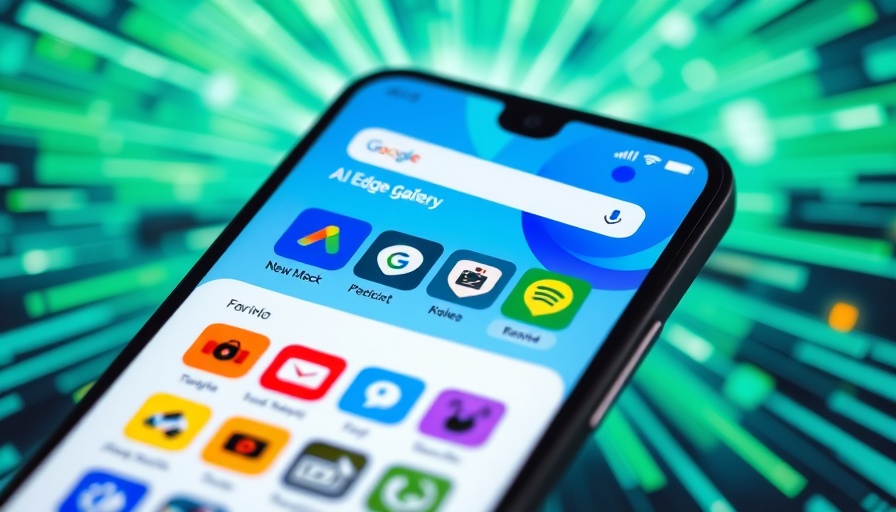
Introducing Google AI Edge Gallery: A Groundbreaking Solution
Imagine a world where you can harness the power of artificial intelligence right from your phone, even when you're stranded in a dead zone with no internet connection. This is not a distant dream but a reality brought to life by Google's new application: the AI Edge Gallery. As the name suggests, this experimental app allows users to tap into advanced generative AI models directly on their devices, ensuring a seamless experience while offline.
Navigating New Technologies: How It Works
The Google AI Edge Gallery is currently available for Android and is slated for release on iOS soon. Unlike traditional apps found on platforms like Google Play, the AI Edge Gallery must be installed via an APK file. Users will first need to adjust their device settings to permit installations from unknown sources and create an account with Hugging Face to access local models. This process may seem complex to some, but it's designed for tech enthusiasts who want to push the boundaries of their mobile devices.
The Power of Offline AI: What Can You Do?
Once installed, the app opens a range of possibilities. Users can engage in tasks typically reserved for online interactions, such as asking questions, generating images, and exploring various AI models. The AI Edge Gallery brings a creative twist to practical use cases, allowing users to experiment with AI functionality in ways that suit their day-to-day lives.
Creating Opportunities: Why This Matters
In an increasingly connected world, the ability to utilize AI offline can be transformative. Whether you're on a camping trip, in an airplane, or simply in an area with poor reception, the AI Edge Gallery ensures you’re never at a technological disadvantage. Moreover, this innovation paves the way for more decentralized AI applications, enhancing privacy by processing data locally.
Understanding the Current Technological Landscape
As smartphones continue to evolve into vital tools for everyday tasks, the introduction of applications like the AI Edge Gallery is an indication of where technology is headed. More companies are recognizing the potential benefits of AI integrated into mobile devices. For instance, other tech giants are exploring similar offline functionalities to cater to users who prioritize privacy and accessibility. This trend reflects a growing movement towards empowering consumers by placing powerful tools directly at their fingertips.
Looking Ahead: Future Trends in Offline AI
As the capabilities of AI continue to expand, the demand for offline applications is likely to grow. This emerging trend will likely affect various industries, from education to healthcare, by providing essential tools that can work independently of internet connectivity. Innovations like Google’s AI Edge Gallery lay the groundwork for a future where mobile technology operates more autonomously, offering smarter, more responsive experiences.
Explore the Innovative Potential
The AI Edge Gallery is not just a technological advancement; it’s an invitation for users to explore the capabilities of AI without the constraints of connectivity. As more users test out this experimental app, we can expect valuable feedback that may shape the development of future AI tools, ushering in an era of increased accessibility and creativity.
Conclusion: Embrace the Future Today
Whether you're curious about AI or you're a tech-savvy user excited about the latest advancements, the Google AI Edge Gallery offers an exhilarating glimpse into the future of mobile technology. By downloading the app and experimenting with its features, you can be part of this innovative journey. Harness the power of AI today, and unlock a world of possibilities—right in your pocket!
 Add Row
Add Row  Add
Add 




 Add Row
Add Row  Add
Add 
Write A Comment